What's the Difference Between Dutch Process and Natural Cocoa Powder?
Can you substitute one for the other or are you better off sticking to the road more traveled?
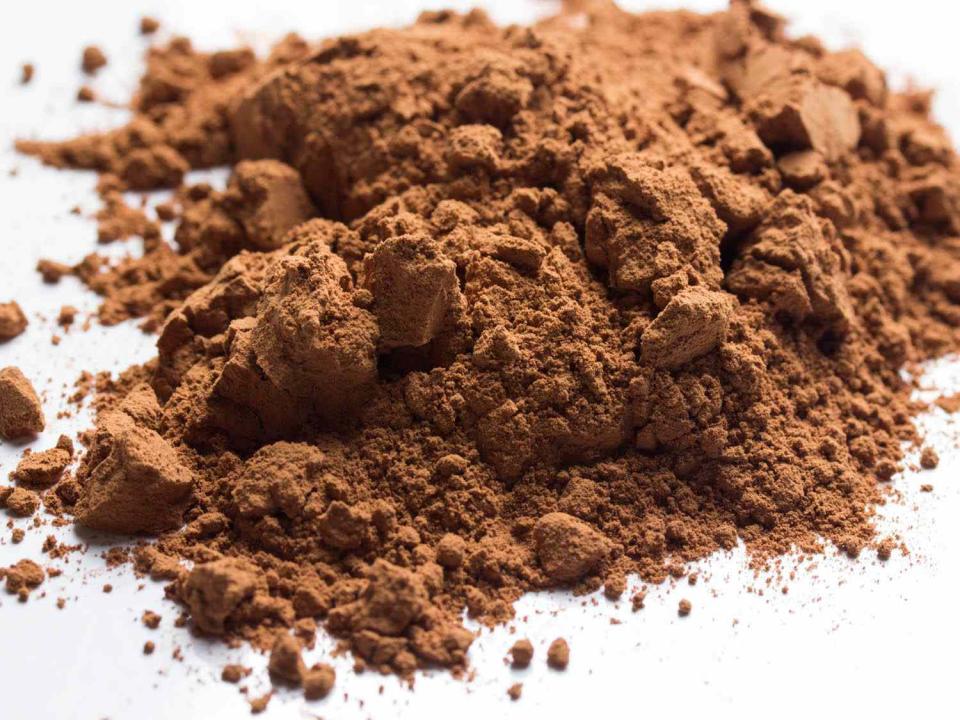
Serious Eats / Vicky Wasik
There's a kitchen stereotype that bakers are meticulous and measure everything to the gram. They follow directions to the letter, all while savory cooks are throwing food into pots Swedish Chef style.
Sometimes I wish I baked like that, but truth be told I often freestyle and substitute. Take, for instance, cocoa powder, which comes in two main varieties, natural and Dutch process. Can you substitute one for the other or are you better off sticking to the road more traveled?
The answer: It depends on what you're baking, but no matter what, the two varieties don't taste the same.
So What Is Cocoa Powder Exactly?
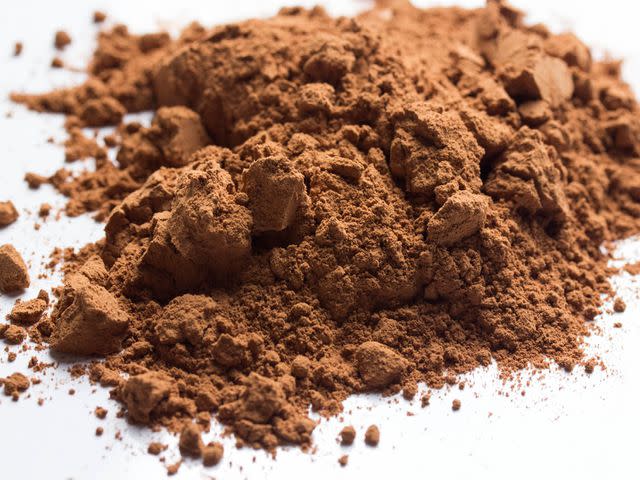
Serious Eats / Vicky Wasik
Cocoa powder is the dry solid remains of fermented, dried, and roasted cacao beans. The beans are cracked into nibs, which are then ground into a paste made of cocoa solids suspended in near-flavorless cocoa butter. Once processors extract the butter they're left with the crumbly solids, which are then ground into a fine powder. So cocoa powder is the core of a chocolate's flavor, without any extra fat, sugar, or milk to get in the way.
Natural Cocoa Powder
pH level: Between 5 and 6.
Flavor profile: Sharp, almost citrus fruit finish.
If you're making natural cocoa powder, that's the end of the line. Chocolate is naturally acidic, so natural cocoa powder typically has a pH between 5 and 6 (for context, water is 7, right in the middle). That acidity bears out in natural cocoa's flavor, which gives the cocoa a sharp, almost citrus fruit finish. Remember, that just like a chocolate bar, cocoa powder flavor varies by brand. While all natural cocoas will have certain characteristics in common (bitterness and astringency), flavors will vary based on the cacao bean and how it's manufactured. In most US supermarkets, natural cocoa is the most commonly available variety of cocoa—think Hershey's, Ghirardelli, and Scharffen Berger.
Dutch Process Cocoa Powder
pH level: 7.
Flavor profile: Smooth and mellow with earthy, woodsy notes.
Disappointingly, this does not mean that it wears tiny wooden shoes. Dutch process cocoa powder (also sometimes called "alkalized," "European style," or "Dutched") is washed with a potassium carbonate solution that neutralizes cocoa's acidity to a pH of 7. Although all cocoa powders can vary in color from light reddish brown to a richer dark brown, the Dutch process gives the powder a noticeably darker hue.
Dutch process cocoa has a smoother, more mellow flavor that's often associated with earthy, woodsy notes. There are also heavily Dutched "black" cocoa powders that bring the cocoa powder to an alkaline level of 8. This is the kind of bittersweet cocoa you'll find in Oreo cookies.
Since Dutch process cocoa isn't acidic, it doesn't react with alkaline leaveners like baking soda to produce carbon dioxide. That's why recipes that use Dutch process cocoa are usually leavened by baking powder, which has a neutral pH.
Are Dutch Process and Natural Cocoa Interchangeable?
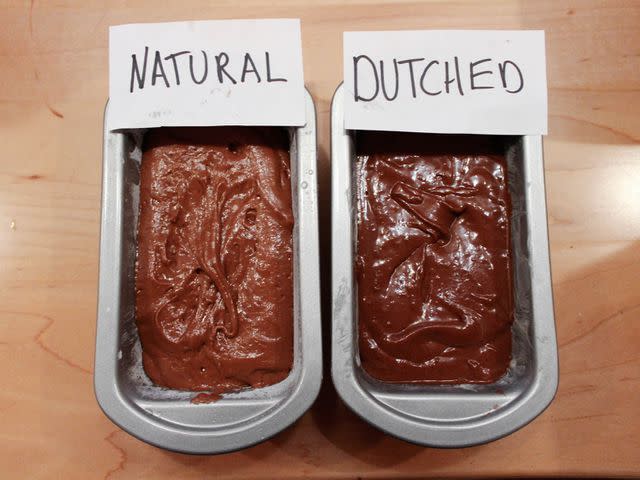
Serious Eats / Marissa Sertich Velie
If a recipe relies on chemical leaveners like baking powder and soda (as opposed to biological ones like yeast), as is the case with most cakes, cookies, and quick breads, it's written in such a way that the natural acids and bases in the ingredients balance each other out so the dough can rise. In buttermilk biscuits, for example, alkaline baking soda is there to neutralize the acidity in buttermilk, which lets the baking powder in the recipe take care of the rise.
If a cake or cookie recipe only calls for baking soda, it likely uses acidic natural cocoa. If it only uses baking powder, it'll probably ask for Dutch process cocoa instead. If a recipe calls for both baking powder and baking soda, you'll need to follow the recipe to get the proper balance of acid and alkaline. Recipes that use baking powder will likely rise regardless of tweaking, but not as well; it's best to stick to the cocoa that a recipe calls for.
For dessert sauces, stirred custards, ice cream, pudding, and the like, the question more comes down to personal taste. Dutch process cocoa has a more intense "chocolatey" flavor while natural cocoa looks lighter in color and tastes slightly astringent. But since you're not dealing with any chemical leaveners, your choice of cocoa won't have much impact on the dessert's texture.
To see just how the differences play out, I made a couple versions of three desserts—chocolate cake, chocolate pudding, and hot cocoa—one version with Dutch process cocoa, the other with natural. Here's how they fared.
Chocolate Cake
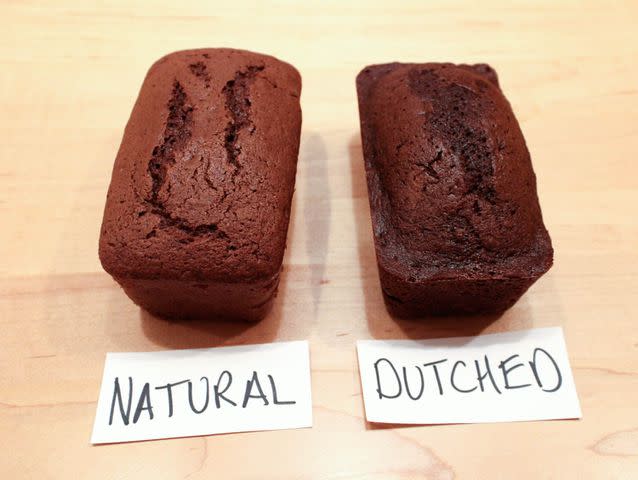
Serious Eats / Marissa Sertich Velie
I tested two chocolate cakes; the first called for baking powder, a mix of baking soda and acidic cream of tartar that, when hydrated and heated, leavens baked goods all on its own without the need for additional acids. In my test, both cakes did rise, but the cake with Dutch process cocoa was slightly darker and fudgier. The cake with natural cocoa powder produced a lighter final result with a slightly more open crumb structure.
(Note the lightly reddish hue of the cake using natural cocoa. This is actually one of the inspirations for red velvet cake, which was originally made with a devil's food cake recipe that highlighted the redness of natural cocoa powder.)
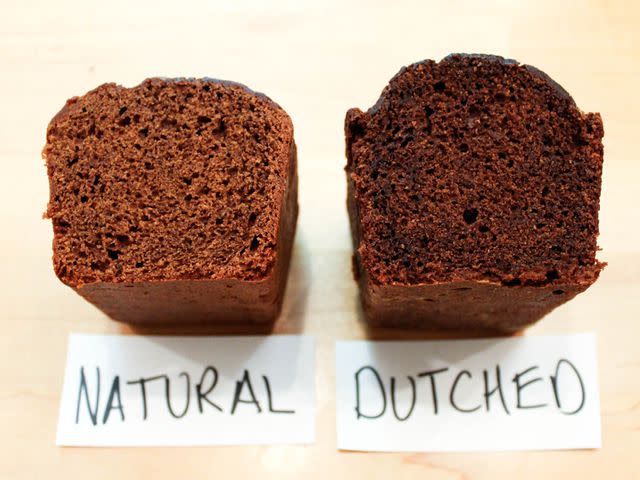
Serious Eats / Marissa Sertich Velie
The Dutch process cake was richer and had a deeper "chocolate" flavor, while the natural was milder. If I had to choose a cake, I'd go for the one with Dutch process cocoa—that rich color, tighter crumb, and deep toasted vanilla flavor are hard to resist.
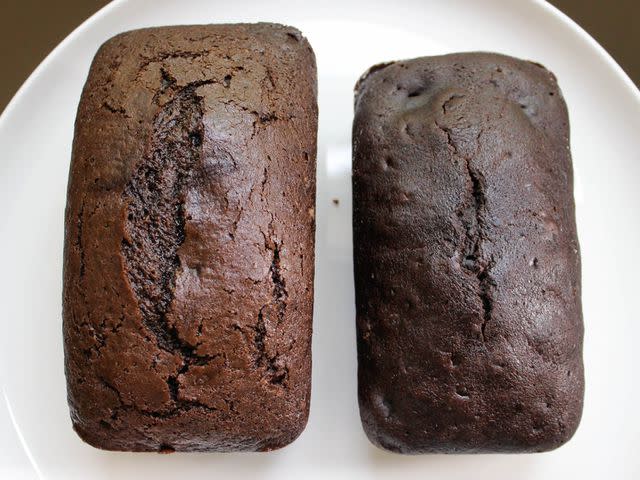
Serious Eats / Marissa Sertich Velie
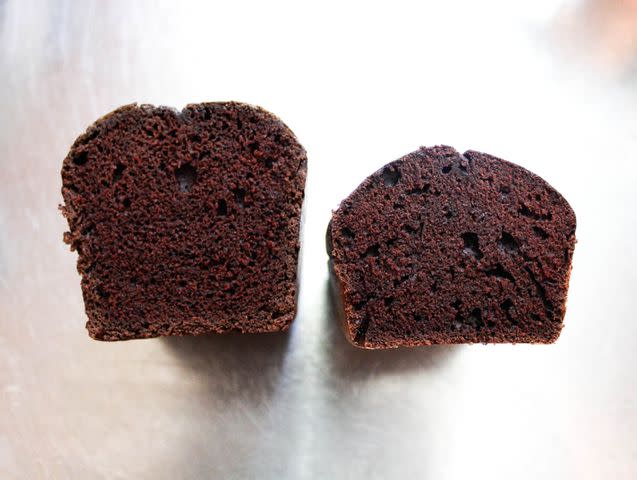
Serious Eats / Marissa Sertich Velie
When a chocolate recipe calls for baking soda, using Dutch process cocoa doesn't fare well. The cake made with Dutch process cocoa, right, doesn't rise and has a soapy aftertaste.The second chocolate cake recipe relied on baking soda and it didn't fare so well with the Dutch process cocoa. Not only did the cake hardly rise, but the Dutch process cocoa combined with the alkaline baking soda lent the cake a bitter, soapy aftertaste.
Chocolate Pudding
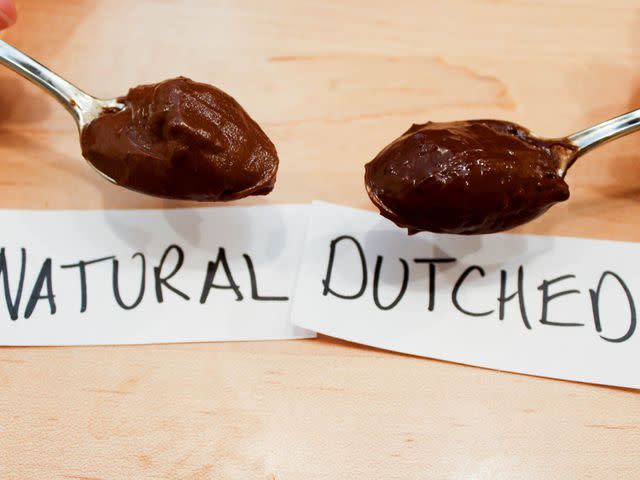
Serious Eats / Marissa Sertich Velie
The chocolate pudding using the Dutch process cocoa was much darker in color, but no more or less creamy than the natural version. The Dutch process pudding had a richer flavor, while the natural pudding was lighter and a little more acidic. In recipes like this, your choice of cocoa is all about your personal taste: rich and dark or light and tangy.
Hot Chocolate
With something liquid like hot chocolate, the major cocoa differences you'll see are color and flavor. The Dutch process version had an earthier but flatter flavor; the natural cocoa version was fruitier, but also more acidic. Again, the choice comes down to what you want your hot cocoa to taste like. In this situation, I recommend playing around with both types of cocoa powder as well as different brands and flavor pairings. For example, if you were making spicy hot chocolate with cayenne pepper and cinnamon, you might want the fruity astringency of natural cocoa, while a hazelnut hot chocolate would pair nicely with a more earthy Dutch process cocoa.
What If the Recipe Doesn't Say?
Many recipes don't specify whether they call for natural or Dutch process cocoa, but American recipes tend to use natural, as that's what you'll find from most American supermarket brands. (Hershey's, for instance, is a natural cocoa.) When in doubt, stick to the leavening rule: recipes that rely on neutral-pH baking powder for leavening are best with similarly neutral pH Dutch process cocoa; those that are leavened by baking soda should stick to natural cocoa powder. If the recipe calls for both baking powder and baking soda, either will work, but it's best to stick to what the recipe calls for to get ideal results.
August 2014
Read More
Read the original article on Serious Eats.

